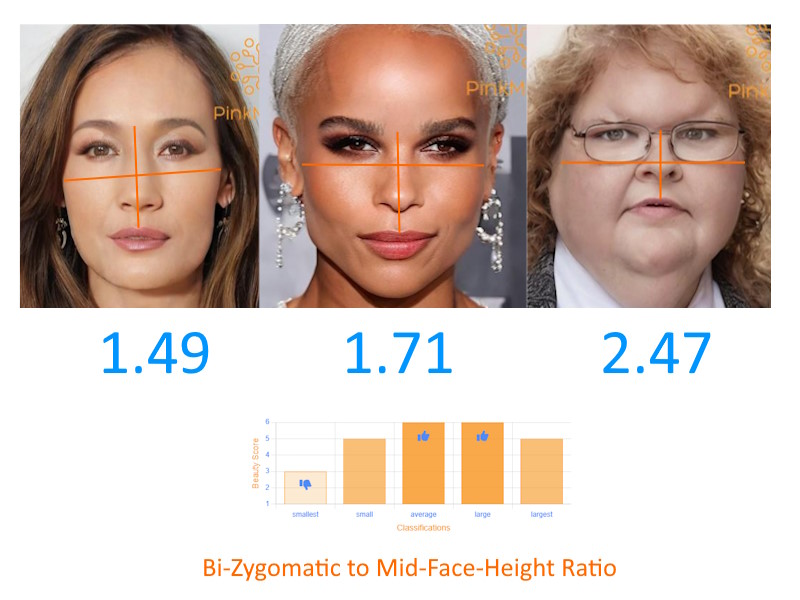Summary Philtrum length, defined as the distance from the the bottom of your nose to the upper lip, has been the focus of several studies. Shin et al. (2014) measured the philtrum length in 251 healthy Korean adults, finding a mean length of 14.3 mm in females. Hasibuan et al. (2024) reported an average philtrum […]

Summary Facial width-to-height ratio (fWHR) is a measure comparing the width of a person’s face to its height. The width is measured at the upper bizygomatic width, while the height is from the top of the eyelids to the top lip. This ratio has been proposed as a sexually-selected signal in humans. A research found […]
Summary The eye-mouth-eye (EME) angle refers to the angle formed between the eyes and the mouth, generally indicating how far apart the eyes are set relative to the mouth. Danel and Pawlowski (2007) established that the EME angle is sexually dimorphic, with females having a larger angle (50.16°) compared to males (47.68°), suggesting that a […]
Summary For men, wrinkle-free, fine wrinkles, and early wrinkles skin is better than a deep wrinkled skin. Grogan et al. (2009) discuss how young adults associate being young with having wrinkle-free skin, highlighting societal expectations and personal appearance concerns. Hamer et al. (2017) further emphasize the significant role of wrinkle-free skin in reflecting a person’s […]
Summary For men, non-pigmented skin (i.e., uniformity and intensity of skin color) is more attractive than pigmented skin. Friedman (2005) suggests that pigmentation indicates aging, leading to the perception that less pigmented skin, which shows fewer signs of aging, is more youthful and attractive. Fink et al. (2012) build on this by demonstrating that for […]
Summary For men, a smooth skin texture is more attractive than a rough skin texture. Little and Hancock (2002) emphasize that both shape and texture, particularly smooth texture, contribute to attractiveness, associating smooth skin with health and youth. Jones et al. (2004) find that skin health and symmetry affect attractiveness, noting that symmetrical faces are […]
Summary For females, normal oiliness on the skin is better as compared to dry skin. Try et al. (2010) describe normal skin as a perfect balance of health and comfort, lacking visible lesions or discomfort, and being easy to maintain and decorate with makeup. In contrast, dry skin, characterized by roughness and inflexibility, can lead […]
Summary For females, wrinkle-free skin is more attractive than wrinkled skin. Research consistently shows that wrinkle-free skin is often associated with attractiveness and youth in women. Samson et al. (2010) identify wrinkles as clear indicators of aging, suggesting that smoother skin is more appealing. This perspective is echoed in Montemurro and Gillen’s (2013) study, which […]
Summary For females, a non-pigmented skin (i.e., uniformity and intensity of skin color) is more attractive than a pigmented skin. The studies on skin appearance and attractiveness reveal key insights into how skin pigmentation affects attractiveness. Samson et al. (2010) found that clearer skin, which typically displays uniform pigmentation, is perceived as healthier and more […]
Summary For female, a smooth skin texture is more attractive than rough skin texture. Research by Igarashi et al. (2007) highlights that smooth skin is not only more appealing but is also regarded as healthier compared to rough skin. This perception is echoed in the work of Fink, Grammer, and Thornhill (2001), who emphasize the […]